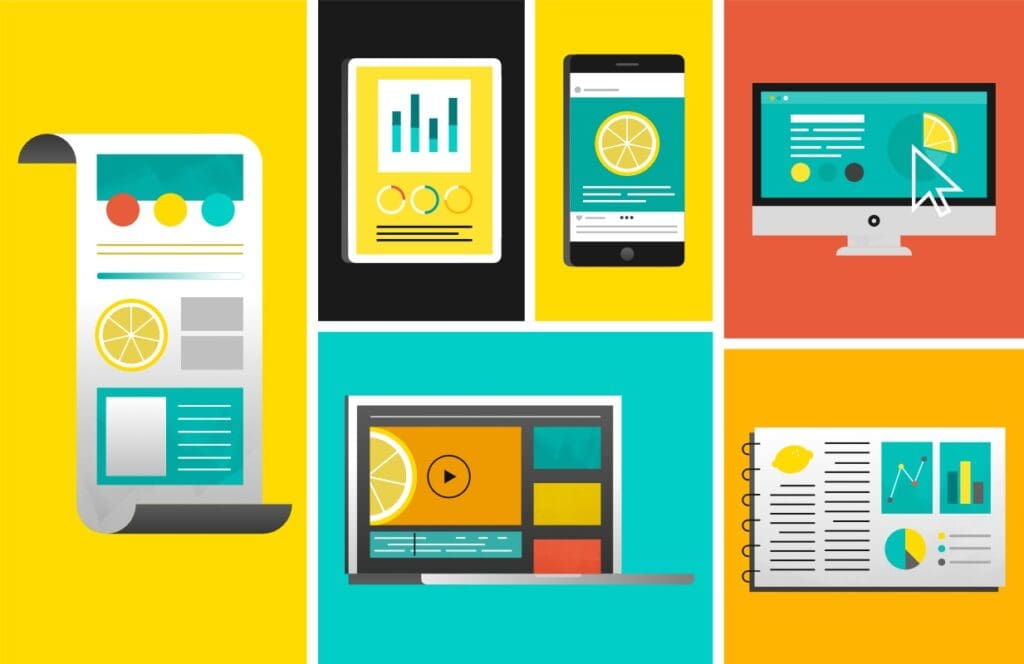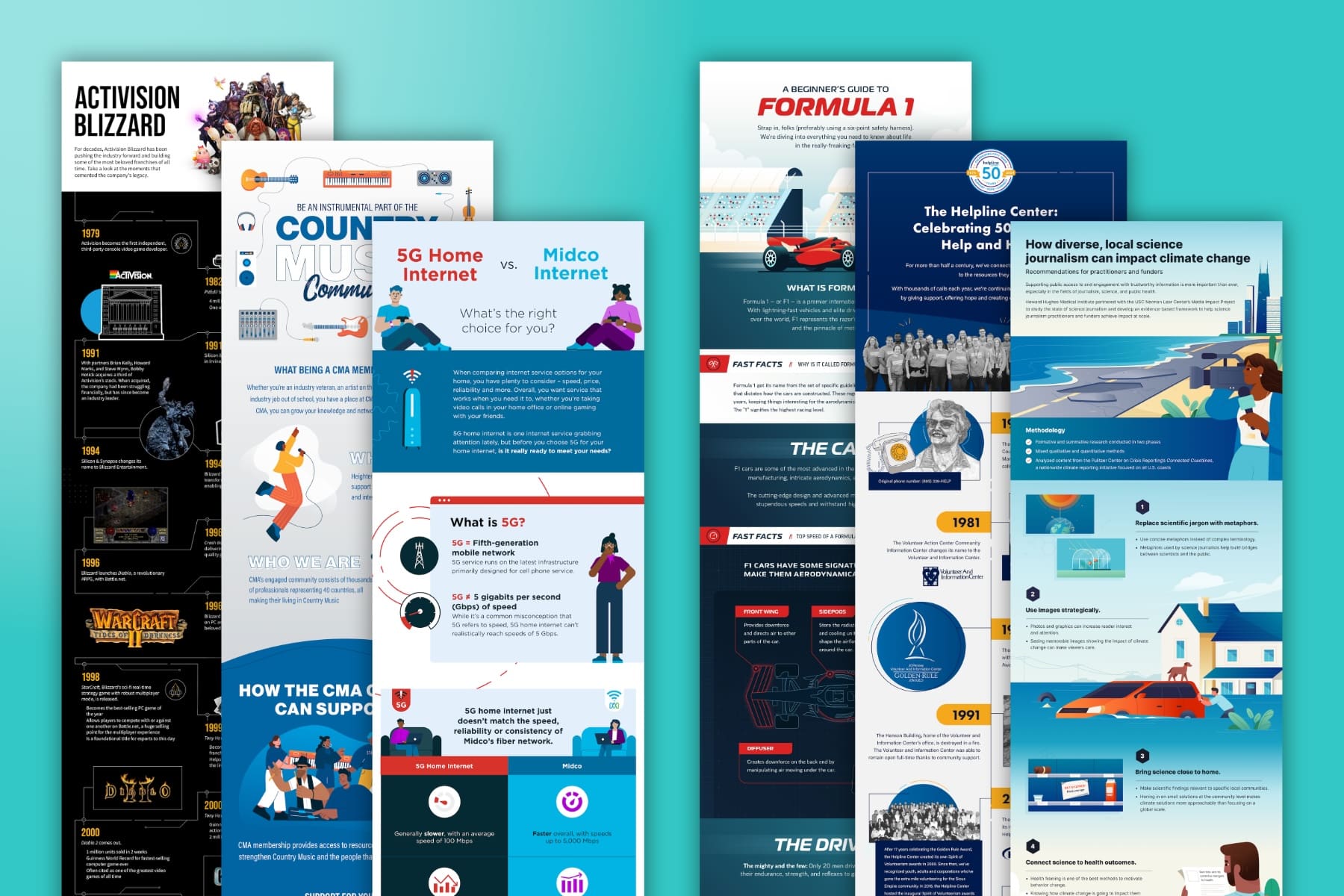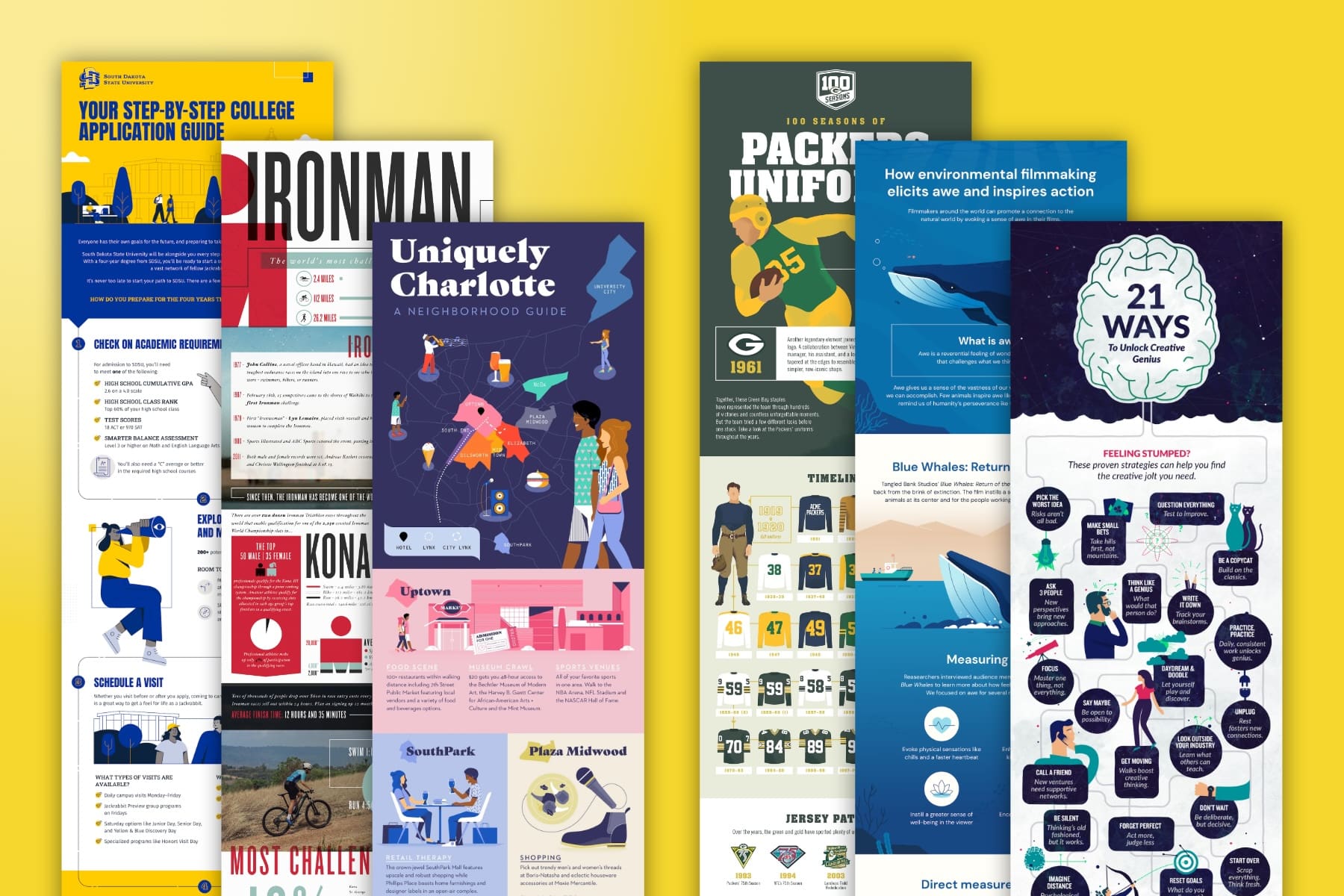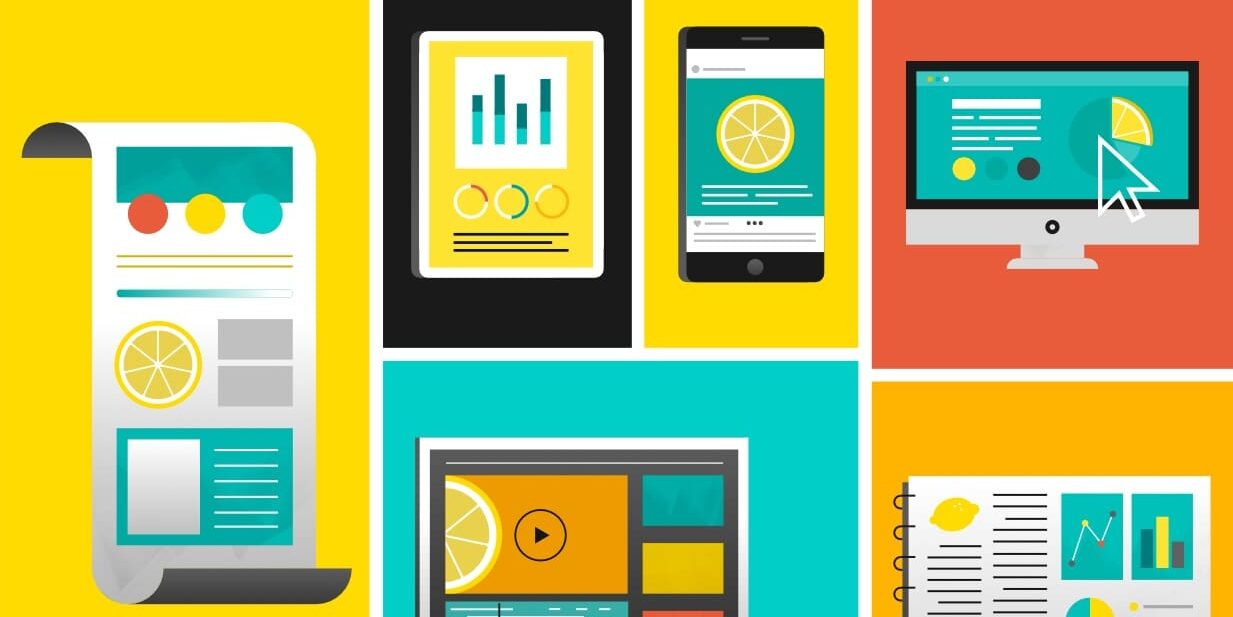Oct 15, 2025
This piece is sponsored by Lemonly.
If your business is struggling to gain traction online, you're not alone. As the amount of content in the world continues to grow, the audience's attention span continues to shrink.
These factors present modern marketers with a challenge: How can your business stand out online in the split second before an audience decides whether or not to scroll away?
A surefire strategy is to give them something compelling to look at. The top tactics marketers use to increase engagement include all visual content, from short-form videos to static graphics and everything in between. Images, videos, and data visualizations are highly effective tools for capturing your audience's attention.

Of course, an eye-catching image is only half the battle. Once you've captured your audience's attention, you need to convey a compelling message. If they are confused or bored, they will quickly disengage.
Visuals help brands get noticed. Visuals are increasingly playing a crucial role for brands publishing content – mere visuals are no longer as unique a selling point as they were years ago. Today, what matters is not whether a company uses visual content, but rather how it uses visual content to tell a compelling story.
Lemonly, the Sioux Falls-based infographic design agency, specializes in visual storytelling in a variety of formats. The Lemonly team creates compelling narratives and engaging visuals that help clients capture and hold customers' attention – and turn that attention into action, whether it's generating leads, finding more content, or building trust with new customers.
“Our infographic-inspired approach to content creation puts visual storytelling at the forefront,” said Amy Moore, co-founder and executive creative director. “We keep the principles of good infographic design in mind no matter what type of content we create. This focus on conciseness and thoughtful design ensures our visual stories are as clear and compelling as possible.”

What is visual storytelling?
Visual storytelling is the art of using visual information to communicate information – in other words, to tell a story. Let's break down each part of the term:
- Visuals can be photos, graphics, illustrations, icons, diagrams, charts and graphs, animations, videos, etc. – any design that conveys meaning or reinforces the message in some way.
- Storytelling is about conveying a structured message to an audience with the aim of explaining or entertaining.
So visual storytelling is about using design to convey or clarify that message. It combines the power of storytelling with the clarity and impact of visual communication.
How brands can use storytelling
Now you may no longer think of your brand’s content as a “story.” For example, what does storytelling have to do with selling B2B software, training healthcare workers, or recruiting students for a university?
Storytelling isn't just about movies, novels, or entertaining friends around a campfire. This allows you to craft your message to elicit maximum engagement and understanding. To bring a storytelling perspective to your content, first think about: How can I communicate this information in an interesting and easy-to-understand way?
Consider some examples of what storytelling in branded content might look like:
- A company overview infographic that explains the company's history, mission, vision, and values.
- An explainer video that introduces new users to the basics of an enterprise software platform.
- A data-driven report providing insight into the impacts of water pollution on river otters.
- An animated short film that features a character or brand avatar on a journey.
All of these are examples of visual storytelling. They feature a structured message intended to explain or entertain, combined with design that makes the story more compelling, clear or emotional. Likewise, a timeline, a functional diagram or a before-and-after comparison are other examples of visual storytelling. They purposefully guide the viewer from one idea to the next and have clear goals for what they want to communicate.

By framing your brand's marketing messages as storytelling, you can create structure, pathos, and clarity that make information easier to understand, remember, and act on. Next, incorporate visual elements to add interest, context, and tone that text alone can't convey. Now you have a winning formula for content that resonates.
Visualize your brand’s story
As the examples above show, visual storytelling can take many forms, including different types of content and different types of stories. The right fit depends on your goals and the story you want to tell. Lemonly's specialty is creating clever content in all areas.
Types of visual content can be of almost any shape and size:
- Infographics
- Animated explainer videos
- Microcontent – social media graphics
- Reports and e-books
- Microsites, quizzes and interactive web experiences
- Presentations
Common story types often fall into categories like these:
- Timeline
- Problem-solution-action
- Process/Instructions
- flow chart
- Comparison
- innovation
- notice
- Data visualization
- Summary of the report
- Explainer
- Demo/Tutorial
When executed well, the combination of visuals and story delivers content that is educational, compelling or entertaining. The best can do all three at the same time. But optics aren't just about making things look pretty. When combined with narratives, they become tools of understanding.
Why visual storytelling is important
Visual elements can help brands stand out, but more importantly, they help messages stick. A stock photo may catch the eye, but rarely creates meaning. Conscious visual storytelling does both: it grabs attention and deepens understanding.
“The most effective visuals look effortless, but to get to that point, strategy and design must work together,” Moore said. “It's not about decorating your message. It's about crafting it in a way that resonates.”
When visuals are combined with a story, they don't just explain – they connect. They simplify complexity, provide emotional resonance, and guide your audience from curiosity to clarity. To better assess whether your artwork is meaningful or just decorative, ask yourself whether the artwork conveys meaning without text. Images that have meaning on their own are key to visual storytelling. You can also reduce the amount of copy needed and make your content more concise and consumable.

Done well, visual storytelling also builds trust. Clear, thoughtful design signals professionalism and care, making your message easier to believe and remember. Trust also leads to loyalty, and loyalty means long-term customers and brand advocates.
Of course, great images require an investment of time and talent. For some, this investment may be a difficult decision, especially since the benefits of visual content – things like brand awareness, affinity and education – are not always easily measurable. Although their impact is difficult to assess, their absence is obvious: confused audiences, missed messages and lost interest. So instead of just focusing on ROI, ask yourself: What is the cost of confusion?
The Cost of Confusion
Companies whose content lacks clarity or personality risk losing their audience due to confusion, lack of information, or just plain boredom. Visual storytelling combats confusion and helps brands avoid costly challenges like these.
Content that doesn’t grab attention isn’t a success. Without a basic level of awareness and understanding, you have no chance of getting your message out there.
How visual storytelling can help: If your audience's first impression includes story-based content, they are more likely to remain interested. Visual storytelling helps create relevance and show your audience that you understand their needs and have a meaningful message to share. It's also a powerful way to draw more attention to your content – adding visuals can reinforce existing campaigns and support other marketing efforts.
Misunderstandings can bring the sales process to a standstill. Without clear content guiding the customer journey, a prospect is more likely to get burned out, or worse, you could confuse them right out of the sales funnel. When the next step isn't clear – what to read, where to go, or what to do next – leads are left confused and frustrated. At this point, wading through disorganized content will no longer be worth it, and your business may no longer be considered as an option.
How visual storytelling can help: Visual storytelling breaks down complex offers into intuitive, easy-to-understand content. Whether you're explaining your product, comparing services, or guiding a user through next steps, visual storytelling helps your audience understand the value of your company.
Your audience needs to understand what you do and don't do. Confusing content can cause audiences to have false expectations about your products or services. Your disappointment can, in turn, lead to loss of loyalty and a lack of trust.
How visual storytelling can help: A well-structured story helps set expectations right from the start. Use visual storytelling to illustrate workflows, demonstrate results, and present case studies. Elements like narrated visuals, step-by-step diagrams, or narrative videos help your audience visualize your offer and understand what to expect.

Make your message stick with visual storytelling
In today's crowded digital landscape, attention is fleeting and confusion is costly. Brands only have a moment to make an impression, and unclear or difficult-to-understand content is easy to forget.
That's why visual storytelling isn't just a nice-to-have; it is a must. When visuals and storytelling work together, they don't just decorate your message – they define it.
Are you ready to tell your brand’s story visually? Lemonly is here to help – check out our work and get in touch to learn how clever storytelling and engaging design can make a difference for your business.
